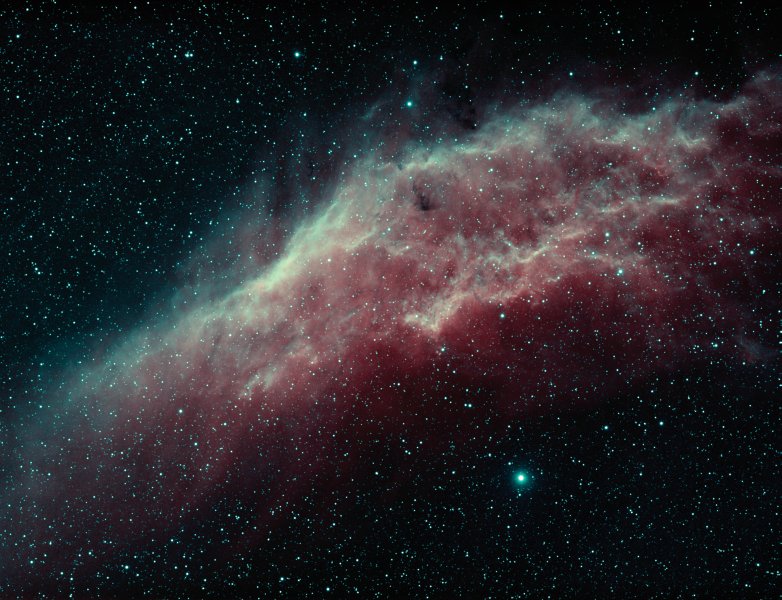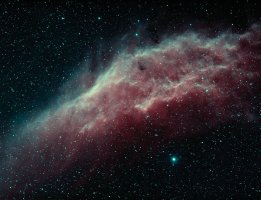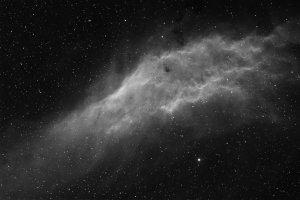NGC 1499, the California Nebula |
||
 |
||
|
||
| In the heroic northern constellation of Perseus
lies a large cloud of gas and dust looking very much like a map
of California, giving this nebula its popular nickname. NGC 1499
is an emission nebula, a large cloud of gas and dust 100
light-years long and about 1,500 light-years away, covering a 1
x 4 degree section of sky. Unlike other emission nebulae
depicted in this site, NGC1499 is not glowing from the ionizing
radiation of hot stars embedded within itself. It is thought
that Xi Persei, the bright star to the lower right of the nebula
in the picture, is the source of the radiation that is causing
this cloud to glow. And Xi Persei, a giant star with a mass of
about 14 times the Sun, is apparently just “passing through the
neighborhood”: it is moving at a different speed and direction
as NGC 1499, meaning that these two objects are not related at
all. Which means that it was not born from within the nebula! The California Nebula is almost visible with the naked eye under a very dark sky. It is very dim and diffused, meaning that telescopic views of it are not easy, and it lends itself better to astrophotography. |
||
| Constellation: Perseus | ||
| When Visible: December - April | ||
| Distance: 1,500 light-years | ||
| Date: October 2006 | ||
| Location: West Chester, Ohio | ||
| Exposure Details:
H-alpha: 6 x 30 Minutes Binned 1x1 (used for H-alpha Monochrome version) S-II: 6 x 30 minutes Binned 1x1 H-Alpha and S-II data combined in various ratios for R/G/B to come up with the image colors rendered. |
||
| Equipment Used:
Takahashi FSQ-106N on a Takahashi EM200 Temma-PC mount. SBIG
STL-6303 camera with 5-position filter wheel and Astrodon
narrowband filters. Externally guided with an SBIG Remote Guide Head on a Borg 76ED refractor. |
||
| Acquisition Software : MaximDL, TheSky6, CCDAutopilot | ||
| Processing Software: MaximDL, Photoshop CS, IrFanView | ||


